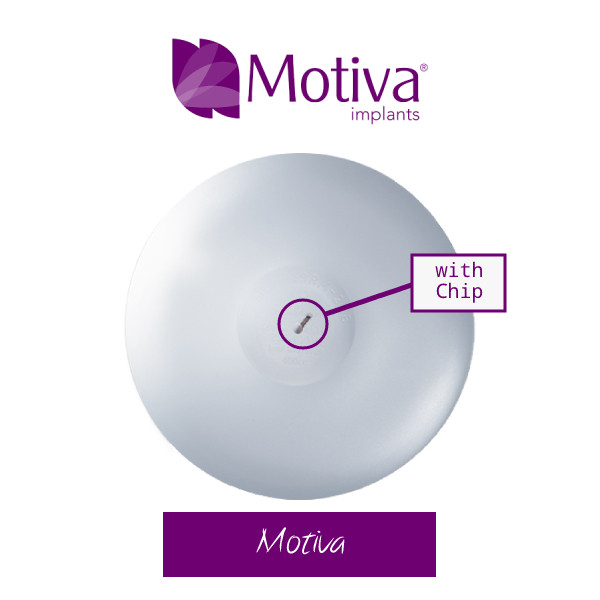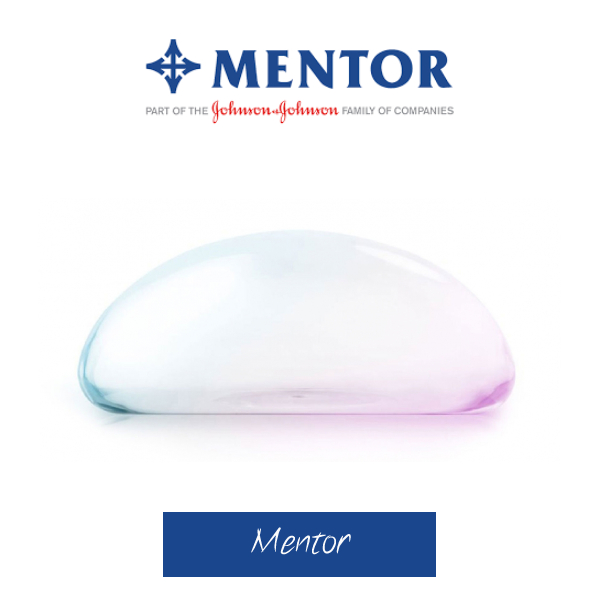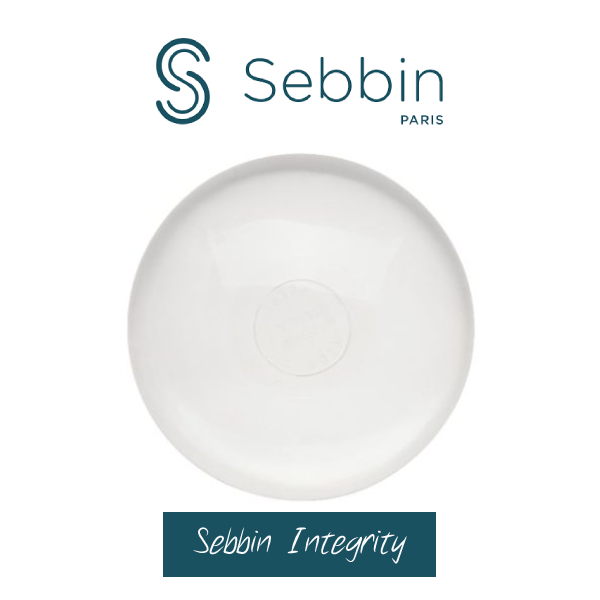Breast Augmentation in Korea
Breast augmentation is a popular cosmetic procedure aimed at enhancing physical appearance and boosting self-confidence. Korea, renowned for its advanced medical technology and skilled plastic surgeons, has become a leading destination for this transformative surgery. In this guide, we will delve into the details of breast augmentation, including the procedure, reasons for undergoing it, and how to prepare for surgery in Korea. Whether you’re considering breast augmentation for aesthetic enhancement or reconstruction, this article will provide you with essential insights and steps to ensure a smooth and successful experience in Korea.

Contents
What is Breast Augmentation?
Breast augmentation, also known as augmentation mammoplasty, is a surgical procedure aimed at enhancing the size, shape, and overall appearance of the breasts. This can be achieved through the use of implants or fat transfer. The goal is to achieve a fuller, more aesthetically pleasing bust line, which can boost self-confidence and improve the body’s proportion.
Types of Breast Augmentation Procedures
There are two main types of breast augmentation procedures:
Breast Implants:
- Saline Implants: These are filled with sterile salt water. They are inserted empty and then filled once they’re in place. While saline implants are less expensive and have a smaller incision, they tend to feel less natural than silicone.
- Silicone Implants: Filled with silicone gel, these implants feel more like natural breast tissue. Silicone implants come pre-filled and require a slightly larger incision.
- Gummy Bear Implants: These are a type of silicone implant known for their thicker, more cohesive gel, which helps them maintain their shape better.
- Round vs. Teardrop Implants: Round implants provide a fuller upper pole while teardrop implants offer a more natural slope, mimicking the breast’s natural contour.
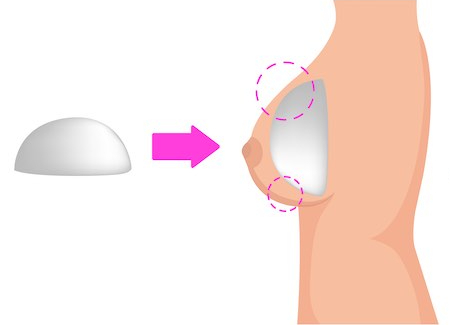
Round Type Implant
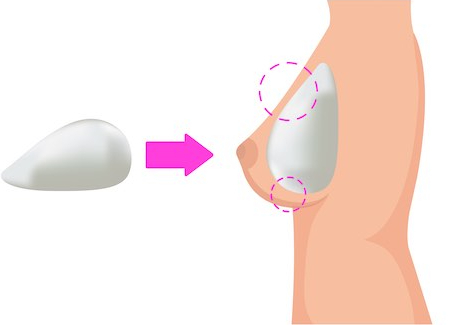
Teardrop Shape Implant
Breast Implant Placement Options:
- Submuscular (below the chest muscle): This placement can offer a more natural look and potentially reduce the risk of capsular contracture.
- Subglandular (beneath the breast tissue): This approach tends to have a shorter recovery time but may result in more palpable implants, especially in those with thinner breast tissue.
Fat Transfer Breast Augmentation:
- Also known as autologous fat transfer, this procedure involves liposuction to remove fat from other parts of the patient’s body, such as the thighs, abdomen, or flanks. The extracted fat is then purified and injected into the breasts.
- This method offers a more natural enhancement but typically results in a more modest increase in breast size compared to implants.
Effective consultations and clear communication with a qualified surgeon are essential to choose the most suitable procedure for each patient. The right approach depends on individual anatomy, personal preferences, lifestyle, and desired outcomes.
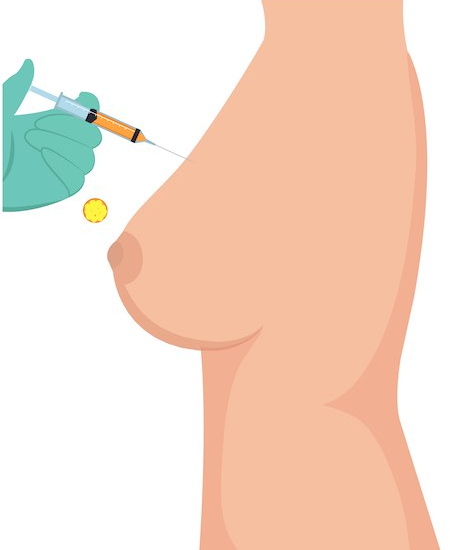
Before Surgery: Fat Transfer Method
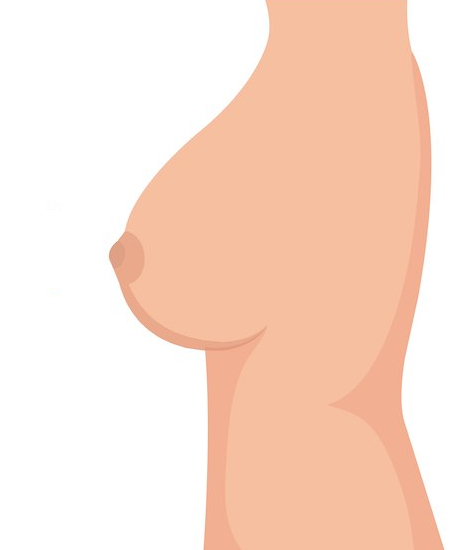
After Surgery: Fat Transfer Method
Incision Methods
Breast augmentations can also alter the proportions of the breast tissue by changing asymmetrical, or uneven breasts to give them a more balanced and symmetrical appearance.
- Armpit Incision – Using this method, the surgeon will make a 3-4cm incision near the armpit and insert the implants. Scarring with this method is nearly invisible, as the scar line follows along the wrinkle of the armpit. Armpit incision surgery is also more suitable for patients who are considering pregnancy in the future, as it will not affect the lobule alveolar system and thus, will not cause any breastfeeding obstacles.
- Underneath the Breast Incision – Using this method, the surgeon will make a 3-cm incision underneath the breasts in order to insert the implants. The targeted location is extremely accurate using this technique.
- Areolar T-cut Incision – The surgeon will make a 1-2cm cut line around the areola(nipple) in order to insert the breasts implants.
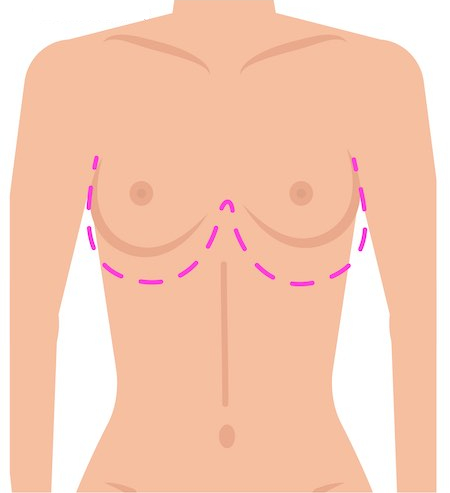
Before Surgery: Incision Method
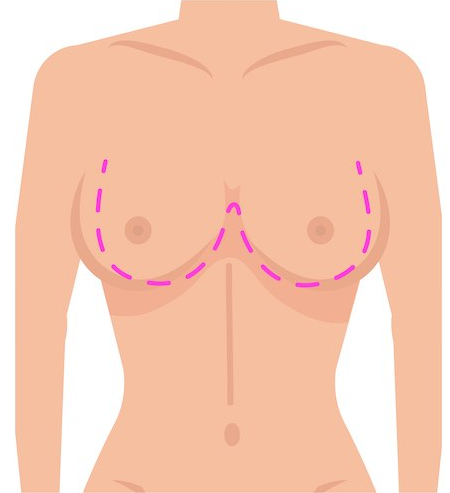
After Surgery: Incision Method
Why Get Breast Augmentation?
Breast augmentation is pursued for various personal and medical reasons. Understanding the motivations behind this decision and the limitations of the procedure can help patients set realistic expectations and make informed choices.
- Enhance Breast Size: Many women seek augmentation to achieve a fuller bust, which can contribute to a more balanced overall body proportion. This is particularly common among women who feel their natural breast size is too small.
- Restore Volume: Pregnancy, breastfeeding, weight loss, or aging can lead to a loss of breast volume. Breast augmentation can restore this volume, giving the breasts a more youthful appearance.
- Improve Symmetry: It’s not uncommon for a woman to have one breast that is noticeably larger than the other. Augmentation can correct this asymmetry, creating a more balanced and harmonious look.
- Boost Self-Confidence: Enhanced breast appearance can positively impact self-esteem and body image. Many women report an increase in confidence and satisfaction with their appearance post-surgery.
- Reconstructive Purposes: Breast augmentation is also used in breast reconstruction, following mastectomy due to breast cancer or other conditions. It helps in restoring the breast’s appearance and can be a crucial step in emotional and physical recovery.
Limitations of Breast Augmentation
While breast augmentation can offer many aesthetic and psychological benefits, it’s crucial to understand what the procedure cannot achieve. Here are some limitations:
- Sagging Breasts: Breast augmentation alone cannot correct significantly sagging breasts. For women experiencing sagging, a breast lift (mastopexy) may be required in conjunction with augmentation to achieve the desired results.
- Cancer Screening Challenges: Breast implants may interfere with mammograms and might obscure the detection of breast cancer. Specialized imaging techniques or alternative screening methods might be needed for women with implants.
- Natural Feel and Movement: Especially in cases of saline implants, the augmented breasts might not always feel as natural or move like natural tissue. Silicone and gummy bear implants offer a more natural feel but still have their limitations compared to natural breasts.
- Scarring: Even though surgeons aim to make incisions in less noticeable areas, scarring is inevitable. The visibility and permanence of scars can vary, and some patients may have more noticeable marks post-surgery.
- Implant Longevity: Breast implants are not lifetime devices. Over time, they may require revision or replacement due to leakage, rupture, or changes in the position of the implants. Patients should be prepared for potential future surgeries.
- Immediate Size Adjustment: After breast augmentation, there may be some initial swelling, which makes the breasts appear larger than their final size. It can take several months for the swelling to subside and the implants to settle into their final position.
- Health Risks: As with any surgery, there are inherent risks, including infection, bleeding, adverse reactions to anesthesia, and complications like capsular contracture (when scar tissue forms tightly around the implant).
Breast Augmentation in Korea
Embarking on a journey to Korea for breast augmentation can be an exciting yet complex process. To ensure a seamless experience and optimal results, it is crucial to be well-prepared. Here are the essential steps and preparations required for undergoing breast augmentation in Korea, from initial consultation to post-surgery recovery.
Surgery Time
Breast augmentation surgery takes around 2-3 hours.
Hospital Stay
You need to stay for 1 night after surgery.
Days in South Korea
We suggest you stay at least 14 days after surgery.
Recovery
It takes 2 to 3 months to recover from breast surgery.
1. Initial Steps
Engaging a professional medical tourism agency like Shin Medical can significantly streamline the process. Shin Medical specializes in:
- Consultations: Arranging initial and follow-up consultations with top-tier plastic surgeons in Korea.
- Clinic Selection: Helping you find the best clinics that match your needs and expectations.
- Translations: Providing translation services to ensure clear communication with your medical team.
- Travel and Accommodation: Assisting with travel plans and lodging arrangements close to your chosen clinic.
2. Medical History and Examination
Be prepared to provide a detailed medical history, including:
- Previous surgeries
- Existing medical conditions
- Allergies
- Medications and supplements you are currently taking
The surgeon will conduct a physical examination to assess your breast tissue, skin quality, and the structure of your chest wall.
Your surgeon will review your current medications and may advise you to stop certain medications, such as blood thinners, that could increase the risk of bleeding. It’s also recommended to avoid herbal supplements and non-prescription medications unless approved by your doctor.
Discuss the different types of implants, possible incision sites, and the expected outcomes. Realistic expectations are crucial for satisfaction. Your surgeon may show you before-and-after photos of previous patients to help you visualize potential results.
Preparations Before Surgery
- Medical Tests: Complete all required medical tests, such as blood tests or a mammogram, several weeks before the surgery.
- Quit Smoking: If you smoke, it is essential to quit at least 4-6 weeks before the surgery to promote better healing and reduce complications.
- Diet and Nutrition: Maintain a balanced diet and stay hydrated in the weeks leading up to your surgery. Avoid alcohol for at least a week before the procedure.
Recovery Period
- Rest and Hydration: Prioritize rest and stay hydrated. Follow your surgeon’s instructions on movement and physical activity.
- Medication Adherence: Take prescribed pain medications and antibiotics as instructed to manage pain and reduce infection risks.
- Diet and Nutrition: Maintain a light diet initially and gradually return to your regular diet.
- Avoid Strenuous Activities: For several weeks, avoid heavy lifting, vigorous exercise, and activities that could strain your chest.
- Incision Care: Follow instructions for incision site care, including keeping the area clean and dry and applying any recommended ointments.
- Supportive Garments: Wear any provided support bras or compression garments as directed to help with swelling and support healing.
Conclusion
Undergoing breast augmentation in Korea is an exciting journey that requires careful planning and preparation. By leveraging the services of a reputable medical tourism agency like **Shin Medical**, you can navigate the process with confidence, ensuring a smooth experience from the initial consultation to a successful recovery. Following these comprehensive steps will help you achieve your desired outcomes and enjoy the benefits of this transformative procedure.


